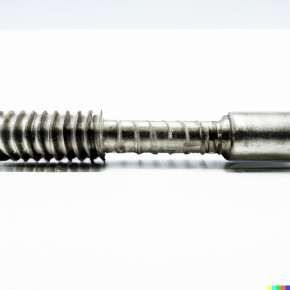The Difference Between Bolts and Studs

Fundamental components like fasteners are often used in many of our modern products, structures, buildings, etc. These devices have traditionally provided security and safety which continually grow to develop more potential to provide precision in fastening. Bolts and studs are two types of fasteners which is commonly used in a wide range of applications in different industries. Each fastener has its distinct purpose that serves essentiality in a specific kind of application. To understand the unique characteristics of bolts and studs let’s delve into the list of their differences in this article.
Bolts Vs. Studs
Bolts and studs are two distinctive fasteners that similarly function to secure joints, assemblies, and two materials together. But to understand them better let’s differentiate the two fasteners in their various applications and purposes.
Bolts are one of the most common types of fasteners which is largely used in different industries all over the world. They are ideal for heavy-duty applications due to their strong connection and durable quality. Here are the key features of bolts:
- Bolts typically use nuts in conjunction. When tightened together the threads in nuts and bolts engage and create a strong and reliable connection. The combination of bolts and nuts is usually ideal for parts where disassembly may be required.
- Bolts have a full threaded shaft that allows the insertion of threaded holes or nuts. This threading provides a secure grip on materials that ensures the bolt remains in place.
- There are wide range of head styles for bolts such as hexagonal (hex) head, square head, round head, and more. Each head style serves a specific purpose for different application needs.
- Some of the common applications of bolts include construction, automotive, machinery, and general manufacturing. They are suitable for joining multiple parts, securing structures, and providing load-bearing capabilities.
Studs, on the other hand, are a type of fastener that is essential for specific applications that require intricate features. They are often associated with applications where consistency and security are required. Here are some unique characteristics of studs:
- Unlike bolts, studs are partially threaded in the shaft. The unthreaded end or plain end is designed to be inserted into a tapped hole.
- Studs don’t have heads and can be threaded at both ends. The threaded portion in one end is used for securing a nut while the unthreaded end is intended to be anchored into a structure component.
- Studs are used in applications that require precise alignment and load distribution such as engine assembly, cylinder heads, and jigs and fixtures.
- Studs are also simplified components that allow easy mounting of the unthreaded end before securing them with a nut.
In conclusion, studs and bolts may have similar qualities in applications but they serve distinct purposes and have various characteristics from each other. Bolts are a common type of fastener used in many industries for their strong and reliable connection, while studs are used in applications that require precision and ease of assembly.
Need high-quality standard and non-standard bolts and studs? Visit the leading manufacturer and supplier – Prince Fastener Manufacturing Co., Ltd. for your specific fastener needs. We carry a wide range of fasteners in various types, sizes, shapes, etc. Contact us now for wholesale fasteners, studs, bolts, and others.